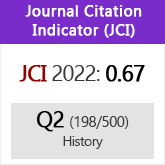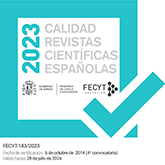«La ciudad imaginada». Contexto ideológico-emblemático y funcionalidad. Ensayo de interpretación de la ciudad colonial
DOI:
https://doi.org/10.3989/revindias.1999.i215.743Abstract
In The Imagined City, the author discuses two great aspects that explain the nature of the new City of Panamá, founded in 1671 after the destruction of the old city by Henry Morgan. The first review the subject of the Western urban tradition that inspires the founders. The second and more important, proposes the thesis of the elitist character of the new Panamá. Confined by a wall in a small peninsula, the city holds only 300 lots that are self-reserved for the élite composed by 300 white families, deporting to the strenght of the elite as a social group, and the stratification level of Panamanian society by the end of the XVIIIth century. This was possible due to a combination of factors of military character, as well as, and mostly, because of the existing social tensions, and the elite's fear of the color population. The paper concludes explaining the way in which a series of devastating fires (1737, 1756, and 1781) ruined the city architectonically and urbanistically, provoking its downfall as an elitist city as an aftermath of the Great Fire of 1737, and the successive urban development of the Suburbs or Arrabal in the second half of the XVIIIth century.
Downloads
Download data is not yet available.
Downloads
Published
1999-04-30
How to Cite
Castillero Calvo, A. (1999). «La ciudad imaginada». Contexto ideológico-emblemático y funcionalidad. Ensayo de interpretación de la ciudad colonial. Revista De Indias, 59(215), 143–169. https://doi.org/10.3989/revindias.1999.i215.743
Issue
Section
Articles
License
Copyright (c) 1999 Consejo Superior de Investigaciones Científicas (CSIC)

This work is licensed under a Creative Commons Attribution 4.0 International License.
© CSIC. Manuscripts published in both the printed and online versions of this Journal are the property of Consejo Superior de Investigaciones Científicas, and quoting this source is a requirement for any partial or full reproduction.All contents of this electronic edition, except where otherwise noted, are distributed under a “Creative Commons Attribution 4.0 International” (CC BY 4.0) License. You may read here the basic information and the legal text of the license. The indication of the CC BY 4.0 License must be expressly stated in this way when necessary.
Self-archiving in repositories, personal webpages or similar, of any version other than the published by the Editor, is not allowed.














